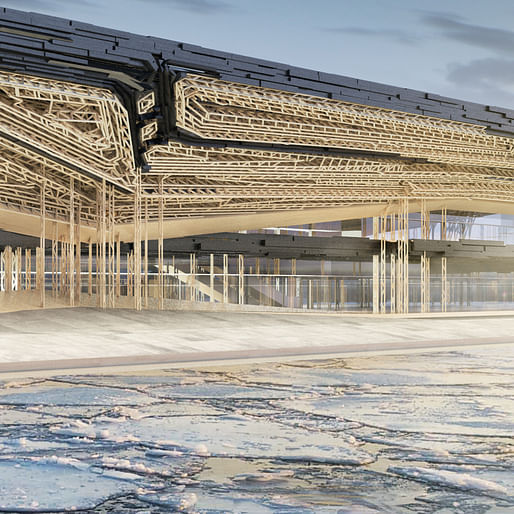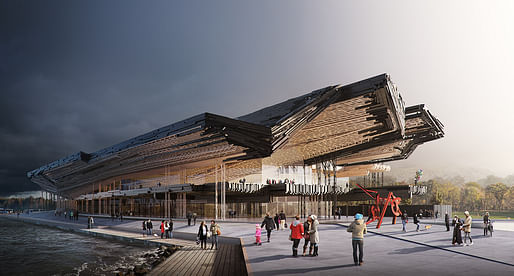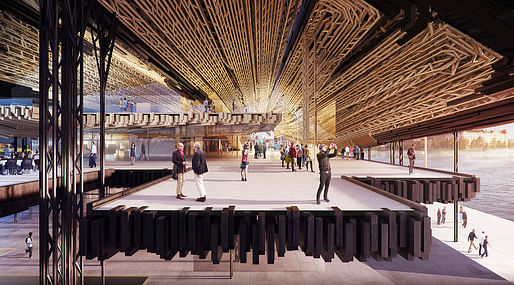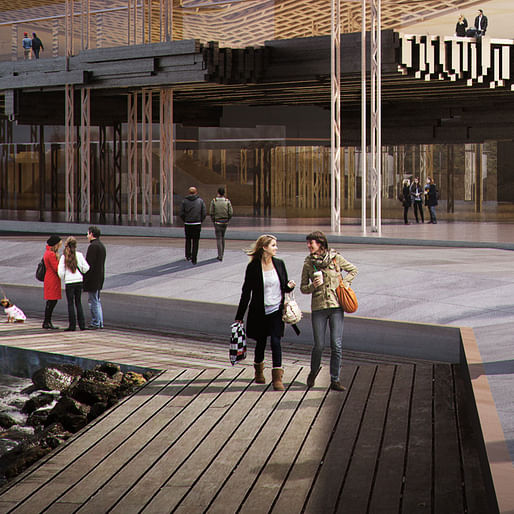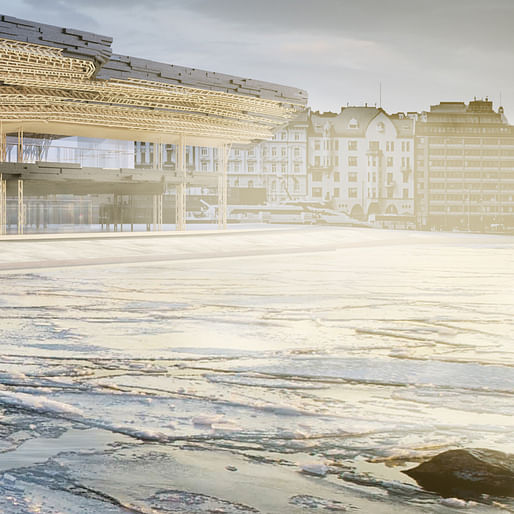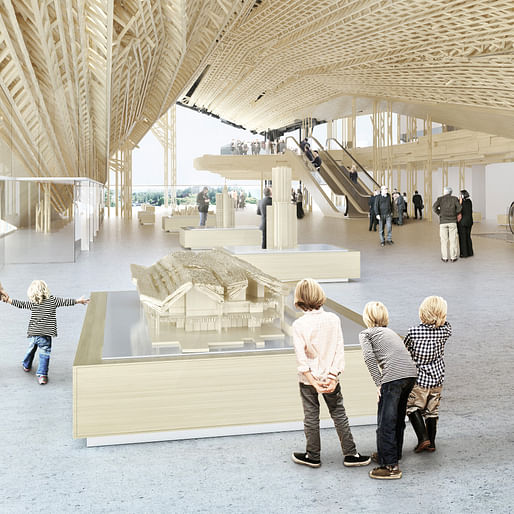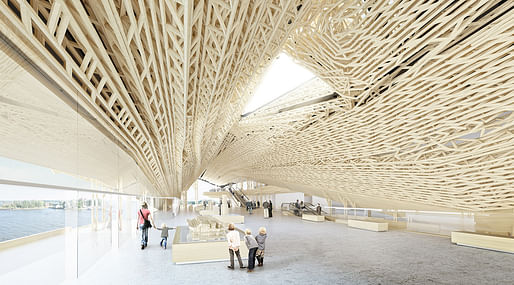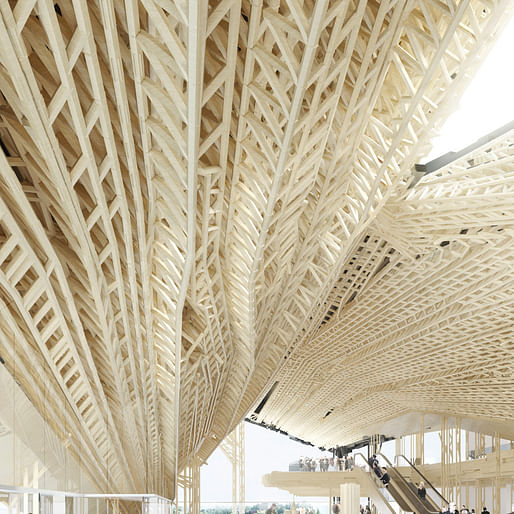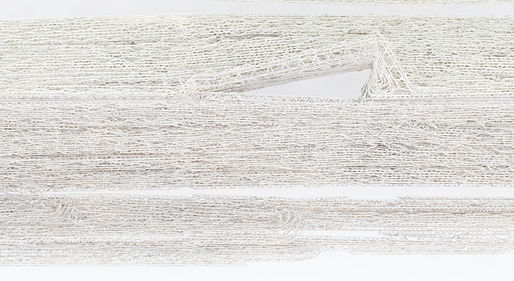

This proposal for the new Guggenheim museum in Helsinki uses digital methodologies to design a carbon-negative building which is largely made of recycled and low-grade timber. A custom-made algorithm is used to efficiently organize thousands of low-grade timber strands and posts, which would normally not be used in construction, into a large-scale volumetric roof structure with a rich material character. The ground floor of the museum is completely transparent and accessible via multiple entries; the museum has the possibility to run different security regimes, shifting ticket control and bag check to the first floor, which would effectively turn the ground floor into a generous, freely accessible civic space, a meeting ground for the city of Helsinki.
In many ways, the project turns the Guggenheim museum in Bilbao inside out: all structure is visible, there is no cladding, and the spaces are all flexible. The proposal uses advanced computational methodologies to develop the roof structure, yet is build out of cheap, recycled and largely standardized building elements. Instead of a glossy metal surface, it proposes a rough and tactile material character.
The project proposes an understanding of architecture as a high-resolution assemblage of discrete objects, rather than an organic whole. Specific architectonic elements such as the roof, columns and floor plates are deliberately designed as autonomous architectural objects, which interact but do not morphologically blend with each other.
Instead of a surface, the roof is conceived as a volume, and acts structurally as a beam - similar to airplane structures. A custom-made algorithm distributes strips of timber which cross in two directions to create a stiff shell, aligning to the main directions of stress in the roof. The density of timber strips is proportional to the localized stresses and proximity to support posts. The lightweight stressed skin structure makes use of low-grade and recycled timber, which would otherwise not be suited for the construction industry and be used as fuel. To prevent difficult joints or massive customization of joints, there is a high degree of repetition in the structure. Slender timber posts are organized in clusters to support the roof construction, the density of clusters being proportional to adjacent span lengths.
The museum floors are designed as Brettstapel timber composite floors, which have excellent thermal properties and are largely fabricated off-site. Through the combined use of highly sustainable Brettstapel floors, glulam beams and a timber stressed skin of low-grade and recycled wood, the new Guggenheim museum would be carbon-negative – resulting in a minimal life cycle impact.
Status: Competition Entry